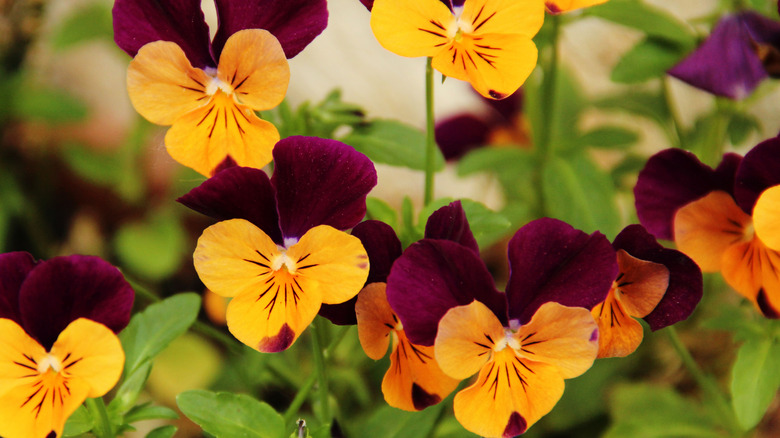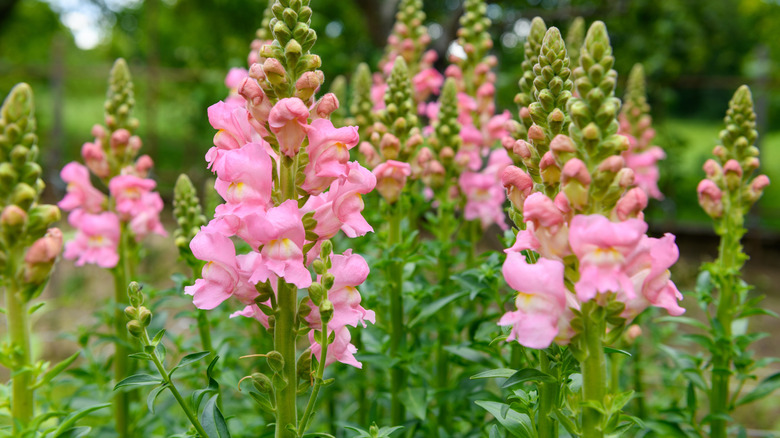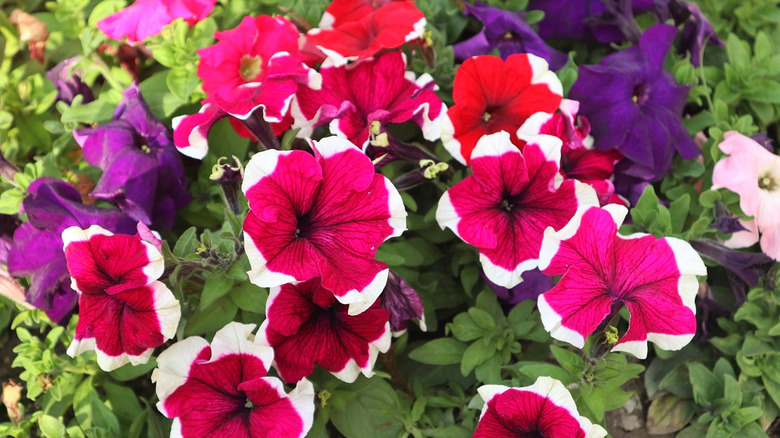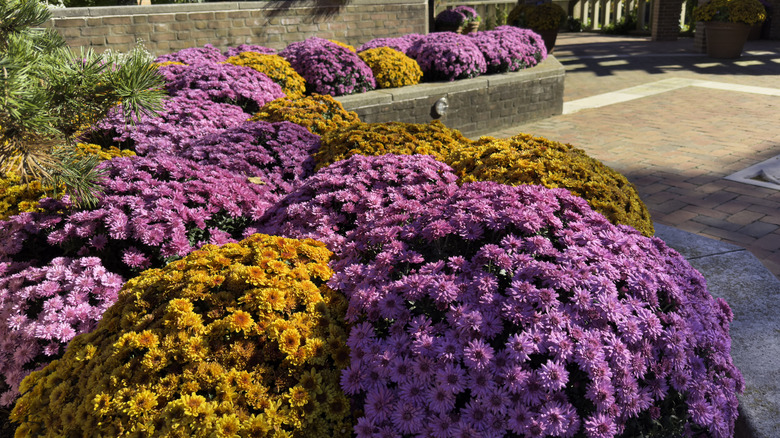Fast-Growing Flowers You Can Still Plant In October
The coming fall doesn't mean you can't have a beautiful and colorful garden. There are multiple fast-growing flowers you can plant in October to brighten up your landscape. Planting in fall means cooler temperatures, and warm soil help ensure healthy, growing plants, as does the season's occasional rain. Your plants can establish a good root system thanks to these conditions, especially when compared to the still-chilly soil of the spring. Planting in the fall also means less concerns about outdoor pests in the garden, so you won't have to worry about having your blooms ravaged. The diverse range of flowers for planting in October means you can choose between annuals and perennials that will maintain their color when the growing season comes around again. You'll even find a few flowers that can keep your garden full of pollinators through the fall.
Just like planting in any season, what works best for your garden in particular can depend on the USDA hardiness zone. No matter your region, you can find an option to add some color and beauty in the garden. Be sure you to get them into the ground to get them well-established and avoid losing precious blooms from a freeze.
Pansies and violas lengthen the fall garden's color
The tried-and-true pansy (Viola x wittrockiana) is a great flower to plant in your beds in October for winter blooms. Although the summer heat makes them wilt, fall planting gives them a chance to offer your garden rich color through the cooler months. They are winter hardy in USDA zones 6 through 10, and typically provide continual flowers throughout the winter in zones 8 through 11. They perform best if you plant them in an area with full to partial sun and moist, well-draining soil. Growing 4 inches to 9 inches tall, they can quickly add rich hues of gold, yellow, purple, and red, as well as bi-color interest to the garden. The fastest route is to buy established plants from a nursery for quicker growth. Deadhead any spent flowers to encourage more blossoms.
Related to pansies but with smaller blooms, violas are another must-have fast-growing flower for your October garden. Often producing more flowers than their pansy cousin, violas are hardy in USDA zones 1-10. In warmer areas in the south, they do well as cool-season annuals until the summer heat ends their season. They enjoy full sun but may tolerate partial shade while planted in neutral soil rich with organic matter. Flowering in shades of blue, purple, lavender, and white, violas don't need as much deadheading as pansies. Gardening experts recommend the fall as the best planting time for both pansies and violas because it gives them time for strong root development.
Snapdragons and canedula
Snapdragons (Antirrhinum majus) are often recommended for fall planting grown as annuals throughout North America, except in USDA zones 9 to 11, where they may perform as perennials. As their name references, snapdragons have an interesting flower snap reminiscent of a dragon's snout. They are one of the most versatile flowers, featuring a variety of heights thanks to tall and dwarf varieties, plus a rainbow of colors. Snapdragons need an area with full sun and soil that drains well. As a bonus, they're a pollinator-favorite for your autumn garden, attracting bees and butterflies.
Also known as the pot marigold, calendula (Calendula officinalis) is another fall favorite. Despite its common name, calendula isn't a true marigold. It loves cooler weather, growing as a perennial in USDA zones 9 to 11 but as an annual throughout zones 2 through 11. Calendula desires an area with plenty of light, with full sun to partial shade, provided it has good draining soil. Planting your seeds in October will reward you with rich color throughout the cool times. Calendula self-seeds, making it possible to find new flowers popping up in the next growing season.
Petunias and ornamental cabbage
Although they're not for every region, petunias (Petunia x hybrida) are a fast way to splash your garden with vibrant color when you live in the South, where they're grown as annuals. Everywhere else, they're tender perennials. If located in cooler areas, try growing them in a planter, then bringing them in when colder temperatures hit. Petunias are easy to grow, even in poor soils, but they demand good drainage wherever planted. The wide variety of color options and variegated styles lets you make a rainbow tapestry in your garden, if desired. To encourage more buds and better growth, deadhead spent flowers.
Ornamental cabbage is a go-to for many fall gardens for color thanks to its hardy foliage. Cold-tolerant for temperatures as low as 5 degrees Fahrenheit, it keeps its vibrancy even in the winter. The colors only grow more intense as the weather cools, and it's entirely possible you'll see them thriving even when covered with snow. Make sure you have enough space to plant — about 12 inches to 3 feet of room, depending on the variety. These beauties can grow up to 12 inches wide, thriving in full sun and good draining soil.
Mums are classic fall staple flowers
Mums, or chrysanthemums, are the gorgeous perennials to grow in your garden for an autumn bloom. Although considered hardy in USDA zones 3 through 9, they are commonly grown as annuals in cooler areas to add fresh, easy splashes of color. If you live in a mild climate without harsh winters, you may be able to plant them directly into the ground, with their color returning the next year.
Make sure they have full sun in addition to well-draining soil when planted. Give them consistent water, but be sure to change how often you water as cooler temperatures set in and the mums enter dormancy. For the best plants to last through the fall, give them proper care, adding a layer of mulch of bark or straw to insulate it against the colder temperatures by working to shade the soil. Let them bloom without pinching until warmer temperatures set in again.




